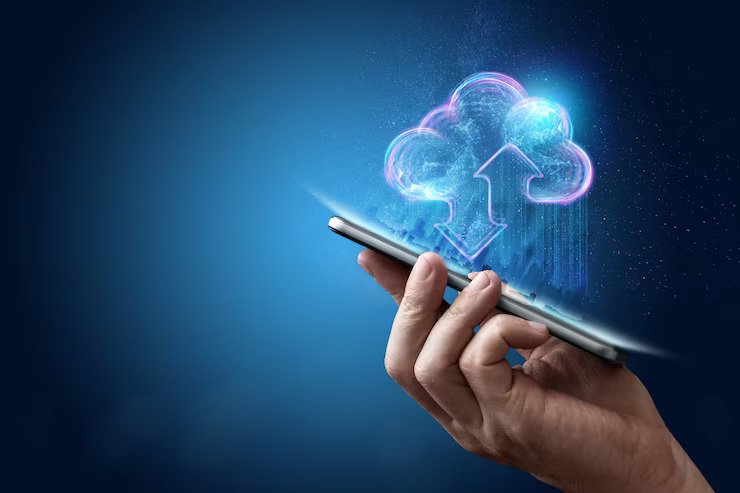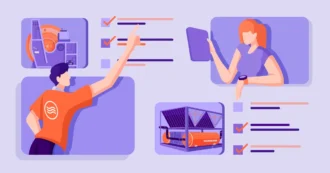Transforming Communications with Cloud Telephony in the 5G Era
- 1 Role of 5G in Telephony-based Contact Center Infrastructure
- 1.1 5G Network Architecture
- 1.2 Enhanced Bandwidth, Speed, and Security
- 1.3 Edge Computing for Accelerated Enterprise Transformation
- 1.4 Internet of Things (IoT)
- 1.5 Network Slicing and Quality of Service (QoS)
- 1.6 Multi-format Unified Communication and Collaboration
- 2 Powered by 5G: The Future is Here
Introduction
5G and cloud telephony are intricately linked, and together they could change the face of the modern customer service industry. For two-thirds of digital businesses, cloud phone systems are among their top investment priorities. But what’s the reason for this growth?
According to Freshworks, cloud telephony software can trim down the cost of setting up a new contact center for unified communications by up to 90%. It can improve the quality of services (QoS) by more than 50% within the first eight months of deployment.
Many factors influence the outcome of voice communications investments. One is the ease and impact of integrations with other technologies, including artificial intelligence, the Internet of Things (IoT), automation, and the 5G network.
Role of 5G in Telephony-based Contact Center Infrastructure
In this article, we explore the role of 5G in telephony-based contact center infrastructure.
5G Network Architecture
Latency, bandwidth, and scalability are integral to the 5G network architecture adopted in contact centers.
Cloud contact centers are established on 5G core network architecture that supports Open Radio Access Networks (o-RAN) and virtual RANs. These systems can deliver new interfaces to support flexible frameworks that are critical in achieving the best results from your contact center applications.
5G connectivity optimizes applications such as Predictive dialers, IVRs, conversational AI, customer data management, and analytical tools.
Also, the wide range of frequency spectrums available with current 5G technology is accelerating the adoption of cloud-based telephony applications across multiple use cases.
Therefore, adopting the 5G core in cloud communications spells a windfall of opportunities for contact centers heavily invested in Cloud platforms.
Enhanced Bandwidth, Speed, and Security
5G, when infused with cloud computing, can enhance the speed and quality of data transfer. Cloud telephony software users can rely on 5G network architecture designed to achieve the highest efficiency and bandwidth consistency.
Concurrently, 5G-based cloud telephony users can accommodate advanced cloud infrastructures for traffic aggregation, device authentication, data encryption, and virtualized SBAs for IoT and edge connections.
All these integrations come together under one roof in contact centers, empowering the IT teams to build a secure cloud-native ecosystem for superior customer communications experiences across regions.
Edge Computing for Accelerated Enterprise Transformation
Contact center businesses are in an unbeatable position to tap the power of Edge Computing with 5G infrastructure.
According to Chris Antlitz, principal analyst at Technology Business Research, it is projected that over 1,000 business and government organizations will have implemented private 5G networks by 2030.
Mobile Edge Computing (MEC) or Multi-access Edge computing would bring contact centers closer to their customers — the exact point where data is created. This would accelerate the pace of data analysis and predictive intelligence delivered on the edge to digital communications teams.
Moreover, contact centers can turn to a fully-remote footprint-independent cloud-hosted infrastructure where traffic data can be intelligently routed to your omnichannel communications and data analytics applications. It would help your contact center to accelerate the response time to every customer query without sacrificing your efficiency in handling high-ticket customers.
With 5G-based applications on edge, reps could benefit from the autonomous telephony capabilities to handle thousands of communication lines and deliver excellent customer experiences.
Internet of Things (IoT)
Deep integration between telephony, edge, and IoT with 5G core infrastructure would be a potent vehicle for scaling unified communications across various industries.
According to an estimate by World Economic Forum, by 2030, there will be close to 30 billion connected devices, more than thrice the current human population. With 5G, it would be possible to broadcast messages to every IoT device (provided the customer has granted permission).
With the accelerated adoption of 5G technologies, the rise in the use of IoT-based connected devices for communications is imminent. The customer services industry could expand its connectivity footprint across the IoT environment to deliver high-speed and unified communication on the devices the customer has opted for.
Network Slicing and Quality of Service (QoS)
New types of network slicing capabilities within 5G, such as Massive Machine-Type Communications (mMTC), would expand the scope of IoT connectivity. This would reduce the load on the existing resources, improve the speed of data transfer and enhance the potency of edge computing applications.
Network slicing in 5G would categorically “slice” each platform, application, and security layer to match the existing and upcoming use case scenarios in a contact center. By transitioning to 5G-based telephony, contact centers would achieve improved security and service performance while continuously evolving to deliver the highest QoS to customers.
Multi-format Unified Communication and Collaboration
5G-based contact centers can embrace metaverse, AR VR and Conversational AI.
Moving ahead with 5G means you are quick on your feet with the metaverse.
With the maturity of 5G-enabled communications, niche technologies such as Augmented Reality/ Virtual Reality and voice AI would become more impactful in customer communications strategy.
By moving closer to the edge, it would be possible for contact centers to deliver the same message with seamless consistency through voice and video calls, chatbots, and AR/VR-based smart wearable devices such as smart glasses.
The move to the edge also ensures increased bandwidth and ultra-low latency, fueling newer ways to bring cloud services for various use cases in telecom, hospitality, healthcare, banking and insurance, logistics, and e-commerce businesses.
Powered by 5G: The Future is Here
An excellent contact center requires an exceptionally stable and scalable network. While still in the early stages of deployment, 5G on edge could change how contact centers create autonomous “connected experiences” in a multi-cloud environment.
Fierce competition, economic uncertainties, and the tremendous pace of innovations are hastening the future of the contact center industry. We no longer need a crystal ball to decipher the impact of emerging technologies such as 5G, edge computing, and the IoT on cloud telephony platforms.



















